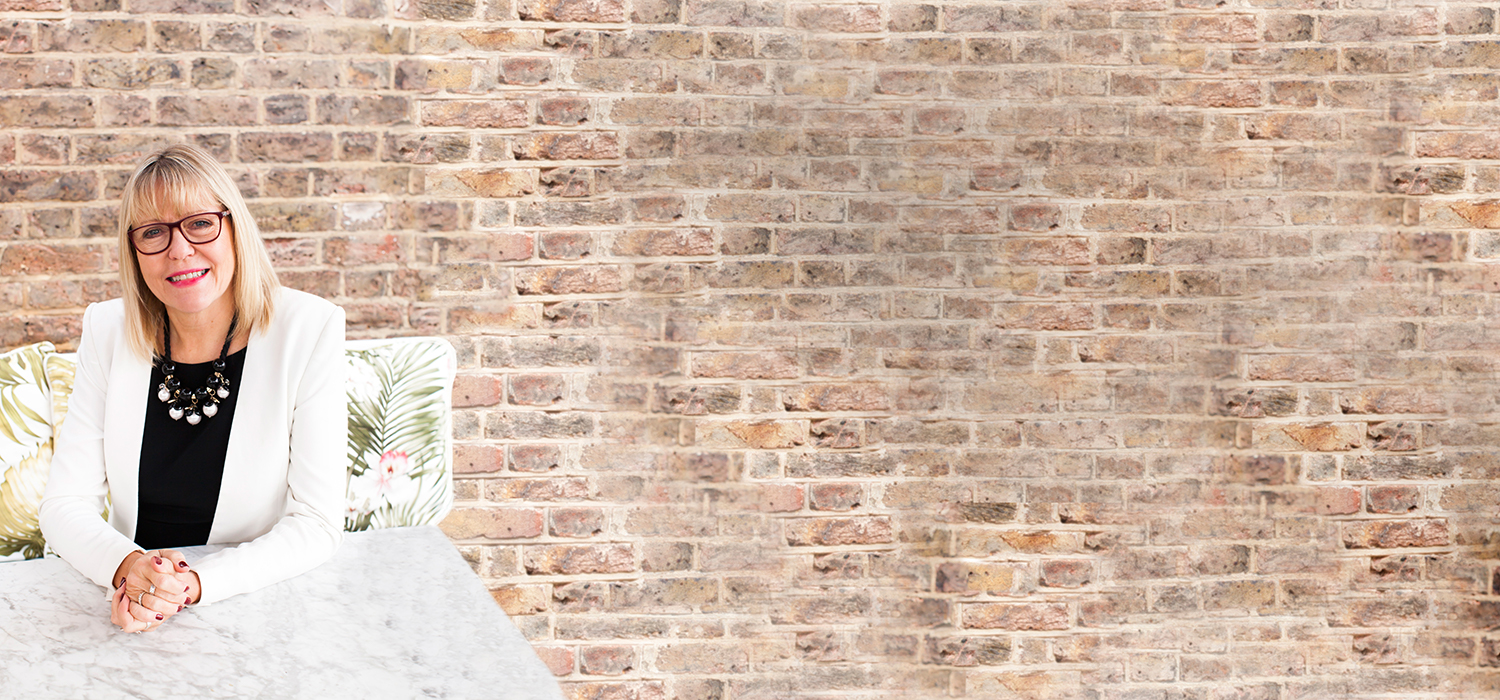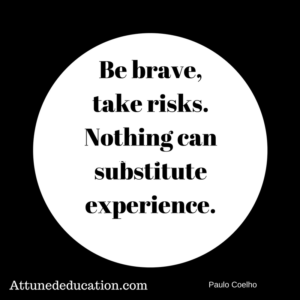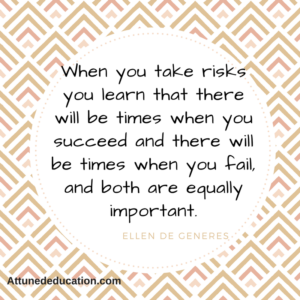Risking a few risks
May 21, 2017We hear a lot about safeguarding, health and safety, risk assessments, and duty of care. These are all very important, especially for anyone involved in the care of children or young people. But as a society it seems we could be in danger of becoming very ‘risk averse’.
In terms of academic learning we encourage children to ‘take risks’ – intellectual ones. Trying new things and risking failure is better than playing it safe when it comes to learning. Indeed if children never tried new things and risked some sort of failure then development in every area will be restricted.
Yet as parents it can be tough to let children take risks. Taking a risk in a Math problem is entirely different from a physical or social risk.
As parents we accept that when children learn to walk they will fall -so we may make sure at first that their landing is reasonably soft and be on hand to pick them up but we certainly let them take the risk – or they would never learn the skill. The same is true of lots of other physical skills, learning to ride a bike, or skate or swim or climb. As parents our job is to manage the risk rather than remove it.
But it seems to get tougher for us as parents as they get older. As a parent there are so many decisions we have to make about letting them become more independent. Going out alone even short distance away alone for example – I remember my children first going to a friend’s home about 200 yards away and watching until they went in the door – then when they’d done that safely they’d go to one a bit further away but I’d want to know they had got there, so parents we’d phone each other. All sensible precautions but all a huge area of potential worry for parents but that is part of parenting.. Somehow parents have to take what they know of the child, their understanding of the risks of the surroundings and potential risks, taking into account their own personality, some people are simply less prepared to allow any sort of risk than others, and make a decision we feel comfortable with.
Nowadays of course there is also the whole ‘online’ world which can be full of potential risks. But the internet isn’t going to disappear so we need to help them manage those risks rather than not let them any where near it.
So as a parent how do you manage risk? Well it certainly isn’t an exact science but here area few pointers.
Know your child
Every child is individual – some have a temperament that means they will often do the ‘risky’ thing and as a parent they need to be encouraged when they are old enough to take stock of things and consider potential consequences before taking a risk. Other children who are naturally more cautious may need to be encouraged to take a risk, even a small one, perhaps doing something that the adult knows they will manage fine, like a new taller slide or swimming with supervision in a deeper part of a pool.
Acknowledge that risk is inevitable
Children cannot and should not grow up in a bubble and as parents we need to acknowledge that risk is inevitable and as that as our children go through life there will be bumps and bruises, or disappointments or rejection.But experience is what can help us develop resilience. As parents we can offer comfort when things go wrong but use those times to build resilience and help with the learning that can come from a situation that didn’t work out so well.
Help children and young people to assess risk
If there is something that might present a risk think through it with the child or young person. What could the unhelpful consequences be, what would be the danger signs. What could be done to make it safer. This could be as simple as changing to different footwear before clambering about on play equipment or knowing that it is ok to ask for help or call home if they feel unsafe when they are out. As a parent being honest about why you are reticent can help them to consider potential risks.
Help them to develop protective behaviours
This is worthy of a whole blog post in itself but for now protective behaviours are all those skills that keep us safe. From having a positive self esteem, to knowing what our personal space is and what to do when we don’t feel safe. Some parents assume children just somehow ‘get this’ but in my experience it is safer to ensure they are explicitly taught what do in different scenarios and sometimes we need to be explicit about risks that they may well not be aware of – that the girl on the internet they’ve been talking to may be anyone of any age etc. You can find out a bit more here. If we take the example of crossing the road we a;; teach our children to stop at a kerb and a first we usually tell them to make sure there isn’t a car coming at all before they cross – as they get older they may learn as we do to make a judgement about how far away the car is and perhaps the width f the road before making a decision.
For other issues like talking to strangers, we need as parents to be sure not that we tell them, but that they understand. What is a stranger, when does someone stop being a stranger, what to they do if a stranger approaches them etc. Often we want, naturally, to ensure their safety by eliminating risks but in many ways it is better to equip them to deal with potentially risky scenarios and know how to listen to their intuition, which will often give indications that we are not feeling safe, than it is to mistakenly feel that we can rap them in cotton wool and that will keep them safe.
Well we never thought parenting would be easy did we?




